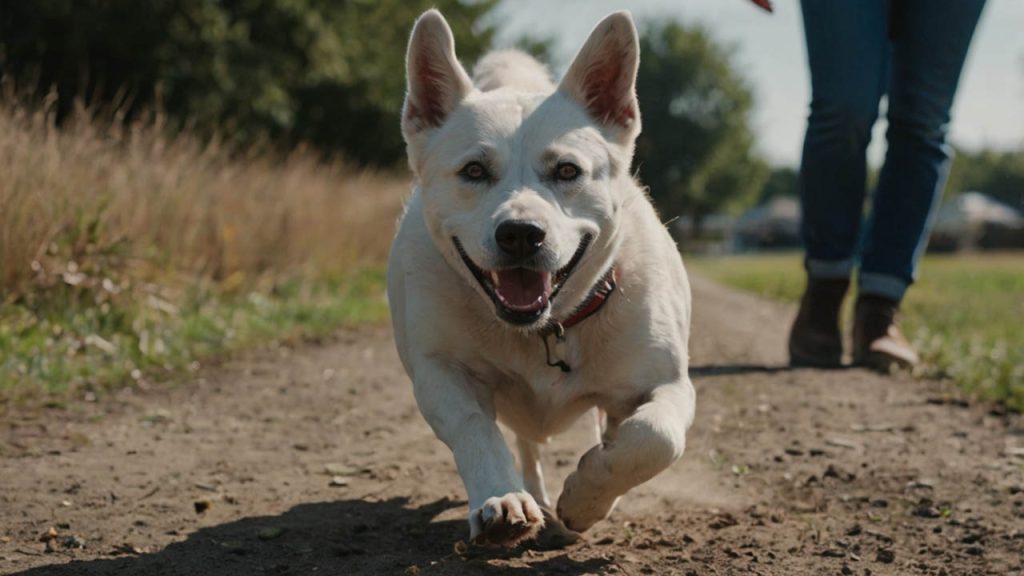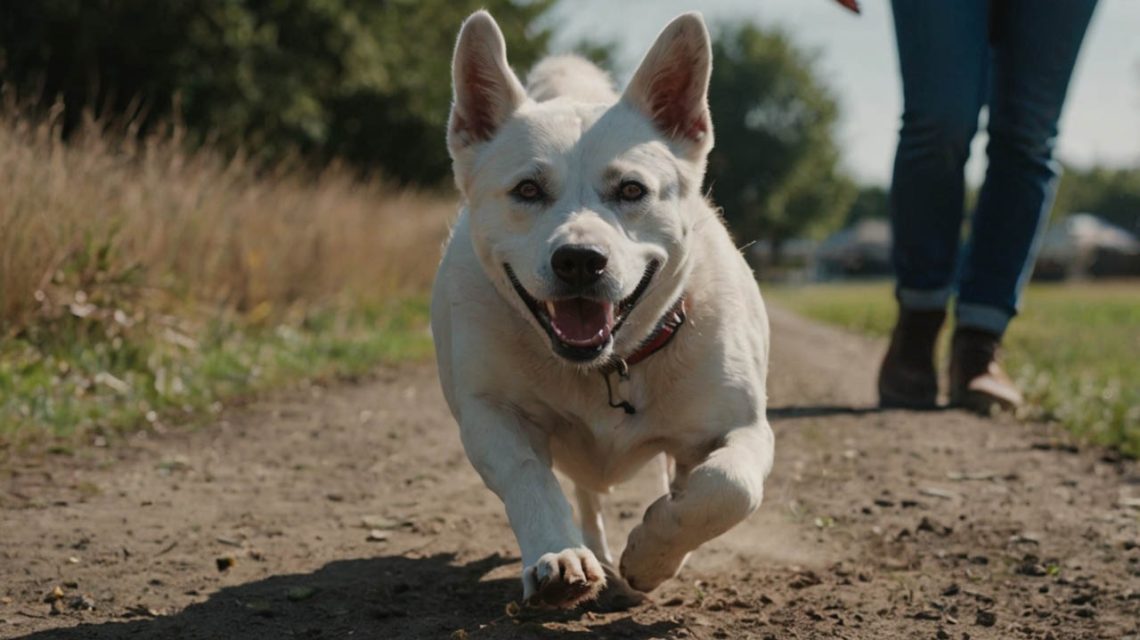Introduction: Understanding Sudden Lameness in Dogs
When pet owners notice and wonder “why is my dog limping all of a sudden,” immediate concern and confusion often follow this alarming observation. According to the American Veterinary Medical Association, lameness represents one of the most common reasons for emergency veterinary visits, affecting approximately 20% of dogs annually. Moreover, sudden limping can indicate conditions ranging from minor injuries to serious medical emergencies requiring immediate intervention.
Understanding why is my dog limping all of a sudden requires careful observation of accompanying symptoms, the affected limb, and your dog’s overall behavior. Research from the University of Pennsylvania School of Veterinary Medicine indicates that 65% of sudden limping cases result from traumatic injuries, while the remaining 35% stem from various medical conditions including infections, arthritis flare-ups, or neurological issues. Furthermore, the speed of onset, severity, and progression of lameness provide crucial diagnostic clues that help veterinarians determine appropriate treatment approaches.
The question “why is my dog limping all of a sudden” demands immediate attention because delayed treatment can transform minor injuries into chronic conditions. Studies published in the Journal of Small Animal Practice demonstrate that dogs receiving prompt veterinary care for sudden lameness recover 40% faster than those with delayed treatment. Therefore, this comprehensive guide examines common causes, emergency indicators, home assessment techniques, and treatment options to help you respond appropriately when your dog develops sudden limping.
Why Is My Dog Limping All of a Sudden: Common Causes
Traumatic Injuries and Accidents
The most frequent answer to “why is my dog limping all of a sudden” involves some form of physical trauma. Dogs may step on sharp objects like glass, thorns, or nails that puncture paw pads or become lodged between toes. Subsequently, even small foreign bodies can cause significant pain and limping that appears suddenly after walks or outdoor play.
Muscle strains and sprains commonly explain why is my dog limping all of a sudden, particularly in active dogs. Sudden movements during play, slipping on wet surfaces, or jumping from heights can overextend muscles or ligaments. Research indicates that sporting and working breeds experience these injuries 3 times more frequently than sedentary pets.
Fractures represent serious reasons for sudden lameness requiring immediate veterinary attention. While complete fractures cause obvious non-weight bearing lameness, hairline fractures may present as mild limping that worsens over hours. Furthermore, certain breeds like Italian Greyhounds and Toy breeds have increased fracture risk due to delicate bone structure.

Medical Conditions Causing Sudden Lameness
Joint problems frequently answer “why is my dog limping all of a sudden” in middle-aged and senior dogs. Arthritis flare-ups can occur suddenly due to weather changes, overexertion, or progression of underlying disease. Additionally, conditions like hip dysplasia or elbow dysplasia may cause intermittent lameness that appears sudden but reflects chronic issues.
Infectious diseases explain some cases of sudden limping in dogs. Lyme disease, transmitted by ticks, causes shifting leg lameness that moves between limbs. Moreover, bacterial infections in joints (septic arthritis) or bones (osteomyelitis) produce sudden, severe lameness accompanied by fever and lethargy.
Cancer, though less common, represents a serious cause when determining why is my dog limping all of a sudden. Bone cancer (osteosarcoma) typically affects large breed dogs and causes progressive lameness in a single limb. Studies show that early detection improves treatment outcomes, making prompt veterinary evaluation crucial.
Emergency Signs: Why Is My Dog Limping All of a Sudden
When to Seek Immediate Veterinary Care
Understanding why is my dog limping all of a sudden includes recognizing emergency situations requiring immediate professional help. Complete inability to bear weight on the affected limb indicates potential fracture, dislocation, or severe soft tissue injury. Furthermore, visible bone protruding through skin constitutes a medical emergency requiring immediate stabilization.
Severe swelling accompanying sudden lameness suggests significant trauma or infection. Comparing the affected limb to the opposite side helps identify abnormal swelling. Additionally, hot, painful swelling may indicate infection requiring antibiotic treatment within hours to prevent systemic spread.
Multiple symptoms beyond limping signal serious conditions. Fever, lethargy, loss of appetite, or breathing difficulties accompanying lameness indicate systemic illness. Moreover, neurological signs like dragging limbs, inability to urinate, or paralysis require emergency intervention to prevent permanent damage.
Signs You Can Monitor at Home
Less urgent situations still require attention when investigating why is my dog limping all of a sudden. Mild limping that improves with rest may indicate minor strain or bruising. However, lameness persisting beyond 24-48 hours warrants veterinary examination even without other symptoms.
Intermittent limping that comes and goes suggests chronic conditions experiencing acute flare-ups. Document when limping occurs—after rest, during exercise, or in specific weather conditions. Furthermore, video recordings help veterinarians assess gait abnormalities that may not present during clinic visits.
Behavioral changes provide important clues about pain severity. Dogs may lick or chew affected areas, resist normal activities, or show aggression when touched. Additionally, changes in sleeping positions or difficulty rising indicate discomfort requiring professional evaluation.
Initial Assessment: Why Is My Dog Limping All of a Sudden
Home Examination Techniques
Safely examining your dog helps gather information about why is my dog limping all of a sudden before veterinary visits. Start by observing your dog at rest, noting any obvious swelling, wounds, or positioning abnormalities. Subsequently, watch your dog walk slowly to identify which limb causes problems.
Gentle palpation can reveal painful areas if your dog tolerates handling. Begin at the toes, checking between pads for foreign objects or injuries. Moreover, carefully flex and extend each joint, noting any resistance, swelling, or pain responses.
Temperature assessment provides diagnostic information. Feel both the affected and normal limb for temperature differences. Furthermore, hot areas suggest inflammation or infection, while cold limbs may indicate circulation problems requiring immediate attention.
What Not to Do
Avoiding certain actions prevents worsening injuries when determining why is my dog limping all of a sudden. Never force your dog to walk or exercise if showing significant pain. Additionally, avoid giving human pain medications, as many prove toxic to dogs even in small doses.
Manipulation of obviously fractured or dislocated limbs causes unnecessary pain and potential further damage. Restrict movement using crates or small rooms rather than attempting splinting. Furthermore, improper immobilization can worsen injuries or compromise circulation.
Delaying veterinary care while trying home remedies risks permanent damage. While minor injuries may resolve with rest, distinguishing serious from minor conditions requires professional expertise. Moreover, early intervention often prevents complications and reduces overall treatment costs.
Professional Diagnosis for Sudden Dog Limping
Veterinary Examination Process
Veterinarians use systematic approaches to determine why is my dog limping all of a sudden during clinical examinations. Physical examination includes palpation of muscles, joints, and bones to identify painful areas. Subsequently, range of motion testing reveals joint problems or soft tissue restrictions.
Neurological assessment evaluates nerve function when investigating sudden lameness. Reflexes, conscious proprioception, and deep pain perception help identify spinal or nerve injuries. Furthermore, these tests distinguish orthopedic from neurological causes of limping.
Gait analysis provides valuable diagnostic information. Veterinarians observe dogs walking and trotting to assess weight-bearing, stride length, and compensatory movements. Additionally, lameness grading scales quantify severity and monitor treatment progress.
Diagnostic Testing Options
Radiographs (X-rays) commonly help determine why is my dog limping all of a sudden by revealing bone and joint abnormalities. Digital radiography provides immediate results showing fractures, arthritis, or bone tumors. Moreover, comparison views of both limbs help identify subtle changes.
Advanced imaging like CT scans or MRI may be necessary for complex cases. These modalities reveal soft tissue injuries invisible on standard radiographs. Furthermore, they provide detailed information about spinal cord compression, ligament tears, or early bone lesions.
Laboratory tests support diagnosis when systemic disease causes lameness. Blood work reveals infections, inflammatory markers, or organ dysfunction. Additionally, joint fluid analysis identifies septic arthritis, immune-mediated diseases, or crystal formations causing sudden lameness.
Treatment Options When Your Dog Is Limping
Conservative Management Approaches
Rest remains fundamental when addressing why is my dog limping all of a sudden due to minor injuries. Strict rest for 7-14 days allows healing of minor strains and sprains. Furthermore, gradual return to activity prevents re-injury during recovery periods.
Cold therapy during the first 48 hours reduces inflammation and pain. Apply ice packs wrapped in towels for 10-15 minutes several times daily. Subsequently, heat therapy after initial inflammation subsides promotes healing through increased blood flow.
Weight management significantly impacts recovery from lameness. Excess weight increases stress on injured limbs and delays healing. Moreover, maintaining ideal body weight prevents future injuries and reduces arthritis progression in affected joints.
Medical and Surgical Interventions
Pain management addresses immediate comfort while investigating why is my dog limping all of a sudden. Veterinary-prescribed NSAIDs reduce inflammation and pain safely. Additionally, multimodal pain management combining medications with other therapies provides superior relief.
Surgical intervention becomes necessary for certain conditions causing sudden lameness. Fracture repair, ligament reconstruction, or foreign body removal require operative treatment. Furthermore, early surgical intervention often provides better long-term outcomes than delayed procedures.
Rehabilitation therapy accelerates recovery and prevents future injuries. Physical therapy, hydrotherapy, and therapeutic exercises restore normal function. Moreover, certified rehabilitation practitioners develop customized programs addressing specific injuries and individual patient needs.

Prevention Strategies for Sudden Lameness
Environmental Safety Measures
Preventing situations that lead to “why is my dog limping all of a sudden” involves creating safe environments. Regular yard inspections remove hazards like broken glass, sharp sticks, or toxic plants. Furthermore, secure fencing prevents roaming and potential traffic injuries.
Indoor safety modifications reduce injury risks. Non-slip rugs on smooth floors prevent slipping injuries, especially for senior dogs. Additionally, baby gates restrict access to stairs for at-risk dogs or during recovery periods.
Exercise surface selection impacts injury prevention. Avoid concrete or asphalt during intense exercise, choosing grass or dirt surfaces instead. Moreover, gradual surface transitions prevent sudden stress on joints and ligaments.
Exercise and Conditioning
Proper conditioning prevents many causes behind why is my dog limping all of a sudden questions. Gradual fitness building strengthens muscles supporting joints. Subsequently, conditioned dogs experience fewer exercise-related injuries than sedentary pets suddenly engaging in activity.
Warm-up and cool-down periods reduce injury risks. Five-minute walks before intense play prepare muscles and joints for activity. Furthermore, post-exercise walking allows gradual cooling and identifies any lameness developing during activity.
Age-appropriate exercise prevents overexertion injuries. Puppies require shorter, frequent play sessions avoiding repetitive jumping. Additionally, senior dogs benefit from low-impact activities like swimming rather than high-intensity running.
Breed-Specific Considerations
Large Breed Vulnerabilities
Certain breeds face increased risks that explain why is my dog limping all of a sudden more frequently. Large breeds like German Shepherds, Labrador Retrievers, and Rottweilers commonly develop hip dysplasia causing sudden lameness episodes. Moreover, rapid growth in large breed puppies increases developmental orthopedic disease risks.
Giant breeds face unique challenges related to their size. Conditions like osteochondritis dissecans (OCD) cause sudden lameness in young, rapidly growing dogs. Furthermore, their weight magnifies stress on joints, accelerating arthritis development and increasing injury severity.
Preventive measures for large breeds include controlled growth through appropriate nutrition. Large breed puppy formulas prevent excessive growth rates linked to orthopedic problems. Additionally, maintaining lean body condition throughout life reduces joint stress and associated lameness.
Small Breed Concerns
Small breeds experience different conditions explaining sudden limping. Luxating patellas (dislocating kneecaps) commonly affect breeds like Yorkshire Terriers and Chihuahuas. Subsequently, sudden lameness occurs when the kneecap displaces from its normal position.
Legg-Calvé-Perthes disease causes sudden lameness in small breed puppies. This condition involves death of the femoral head due to interrupted blood supply. Furthermore, early surgical intervention provides the best outcomes for affected dogs.
Fractures occur more frequently in toy breeds due to delicate bone structure. Jumping from furniture or being stepped on causes serious injuries. Moreover, prevention through environmental modification and careful handling reduces fracture risks significantly.
Recovery and Rehabilitation
Home Care During Recovery
Supporting dogs recovering from conditions causing sudden limping requires dedicated home care. Medication compliance ensures consistent pain relief and anti-inflammatory effects. Furthermore, completing prescribed antibiotic courses prevents infection recurrence or resistance development.
Environmental modifications facilitate healing while addressing why is my dog limping all of a sudden became necessary. Temporary ramps replace stairs for dogs with mobility restrictions. Additionally, raised food bowls reduce neck strain for dogs with front limb injuries.
Mental stimulation during restricted activity prevents boredom and depression. Puzzle feeders, training sessions, and gentle grooming provide engagement without physical exertion. Moreover, maintaining routines wherever possible reduces stress during recovery periods.
Monitoring Progress
Tracking recovery helps assess treatment effectiveness. Daily lameness scoring using consistent scales documents improvement or deterioration. Subsequently, this information guides treatment adjustments and indicates when veterinary rechecks are needed.
Recognizing setbacks early prevents minor issues from becoming major complications. Increased lameness, swelling, or behavioral changes warrant immediate veterinary contact. Furthermore, some conditions require extended recovery periods with gradual improvement rather than rapid resolution.
Follow-up examinations ensure complete healing before returning to full activity. Veterinary rechecks may include repeat radiographs or physical examinations. Additionally, premature return to activity risks re-injury and chronic lameness development.
Long-Term Management of Chronic Conditions
Arthritis Management
When arthritis explains why is my dog limping all of a sudden during flare-ups, long-term management becomes essential. Multimodal approaches combining medications, supplements, and lifestyle modifications provide optimal results. Moreover, regular monitoring allows treatment adjustments as conditions progress.
Joint supplements like glucosamine and chondroitin support cartilage health. Omega-3 fatty acids reduce inflammation naturally. Furthermore, newer supplements like green-lipped mussel show promise in managing arthritis symptoms.
Alternative therapies complement traditional treatments. Acupuncture, laser therapy, and massage provide pain relief without medication side effects. Additionally, many dogs show significant improvement with regular alternative therapy sessions.
Lifestyle Adaptations
Permanent modifications may be necessary after determining why is my dog limping all of a sudden revealed chronic conditions. Regular, moderate exercise maintains muscle mass and joint flexibility. Subsequently, swimming provides excellent low-impact exercise for dogs with persistent joint issues.
Weight management remains crucial for dogs with chronic orthopedic conditions. Every excess pound increases joint stress and inflammation. Furthermore, prescription weight management diets help achieve and maintain ideal body condition.
Quality of life assessments guide decision-making for chronic conditions. Pain scales, mobility assessments, and activity monitoring help determine treatment effectiveness. Moreover, honest evaluation ensures decisions prioritize patient comfort and wellbeing.
Conclusion: Taking Action for Your Limping Dog
Understanding why is my dog limping all of a sudden empowers pet owners to respond appropriately to this concerning symptom. Throughout this comprehensive guide, you’ve learned about various causes ranging from simple foreign bodies to serious conditions requiring immediate intervention. The key lies in careful observation, prompt veterinary consultation when needed, and following through with prescribed treatments to ensure the best possible outcome for your beloved companion.
Remember that sudden limping always warrants attention, even if your dog seems otherwise normal. Early intervention prevents minor injuries from becoming chronic problems and identifies serious conditions when treatment is most effective. Furthermore, establishing a relationship with a trusted veterinarian ensures you have professional guidance when these concerning situations arise.
Take action today by performing a gentle examination if your dog shows any signs of lameness. Document your observations, including which limb is affected, when the limping began, and any accompanying symptoms. Most importantly, don’t hesitate to seek veterinary care when your instincts tell you something isn’t right—your prompt response could make the difference between a quick recovery and long-term complications for your faithful friend.


